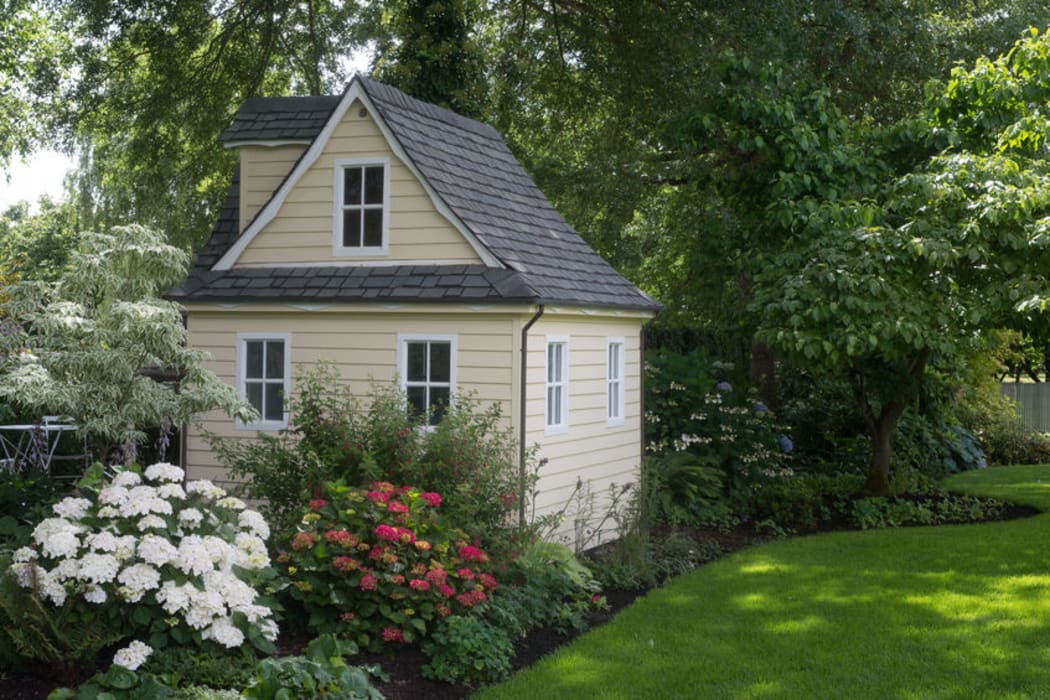The Covid-19 pandemic changed the pace of life for a lot of people, and has given rise to the Cottagecore movement - which had otherwise been bubbling away on social media.

Photo: 123rf
Envisage the soft peacefulness of the pastoral life, augmented with floral print cushions and sourdough baking.
New York-based architect and designer Kate Reggev has written about cottagecore for Architectural Digest - she describes it as a burgeoning movement which has found momentum during the disruptions to daily life caused by the Covid-19 pandemic.
"There's a lot of things that have emerged because of the pandemic and certainly one of them is realising how interconnected we are and yet also how distant we are," she says.
"I think there is really this innate desire that a lot of people have to turn back to something a little bit simpler, a little bit less stressful also."
Cottagecore invokes images of "traditional countryside England, this kind of romantic, nostalgic feeling, mixed with an interest in agricultural life and skills and crafts, that embraces a simpler and more sustainable existence," and has become particularly popular on social media among younger people.
However, Reggev says the trend is more diverse that it might initially seem.
"Traditionally we think about the English countryside and we automatically associate it with slim white women in these peasanty type dresses, but really there's a lot of people who are active in cottagecore who are really working hard to break those boundaries and break through those traditional views."
In particular, the trend has been embraced by some people in the African-American community, including Noemie Sérieux, who runs the popular Instagram account @cottagecoreblackfolks.
While she initially didn't see anyone in cottagecore who looked like her, the movement has grown to be much more racially diverse.
"It's an interesting complexity there - looking at the past, but trying to do something different with it," Reggev says.
Another trend that helped push the idea of cottagecore into the mainstream was the popular video game Animal Crossing New Horizons, which was released on Nintendo Switch around the time the pandemic began.
The game revolves around creating an island paradise inhabited by a variety of cute animal villagers - with cottagecore becoming one of the most popular design themes in the game.
"I think the two are very much related," Reggev says. "There's this desire for things that are comforting, and comfort can come in a lot of different forms that might be in the form of a cuddly-appearing digital friend online, in a game, or it might be baking bread or baking cookies."

Animal Crossing. Photo: Supplied / Josh Naus
As we head in 2021, with hopes that the pandemic will end through the introduction of new vaccines, Reggev expects the idea of comfort to still be popular in a design context, but with some added colour.
"I think we're also starting to be a lot more interested in joy," she says. "When Pantone revealed their colours of the year this past December in 2020, one of the colours was this really vibrant lemon yellow and I think we have all spent so much time indoors and ready for a change that we're looking for something that's vibrant, that brings us joy."
While Reggev says some aspects of the cottagecore trend may have a shorter life span - think milling your own flour, or churning your own butter - other aspects are likely to be here to stay.
"I do think that cottagecore is something that is here to stay, we are always going to be wanting that sense of comfort and time away from our screens, even if hopefully the pandemic ends sometime soon," she says.
"I think there's a lot of different ways that people can either use things they already have or things that exist out in the world, which again ties into this idea of sustainability and reducing our impact in that way."

